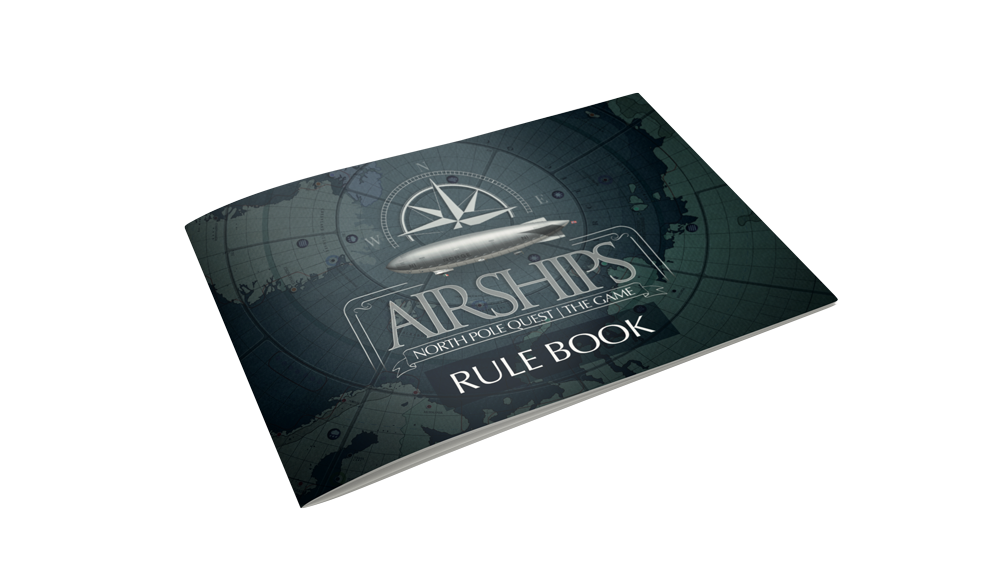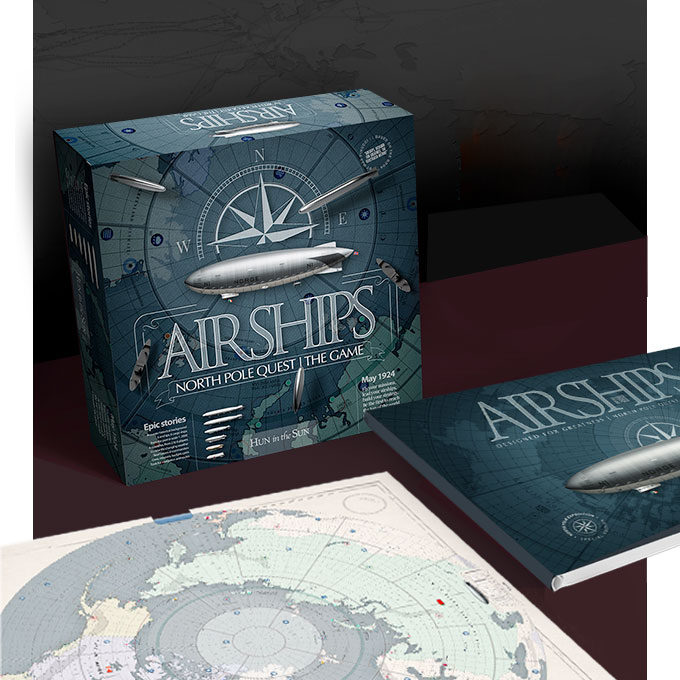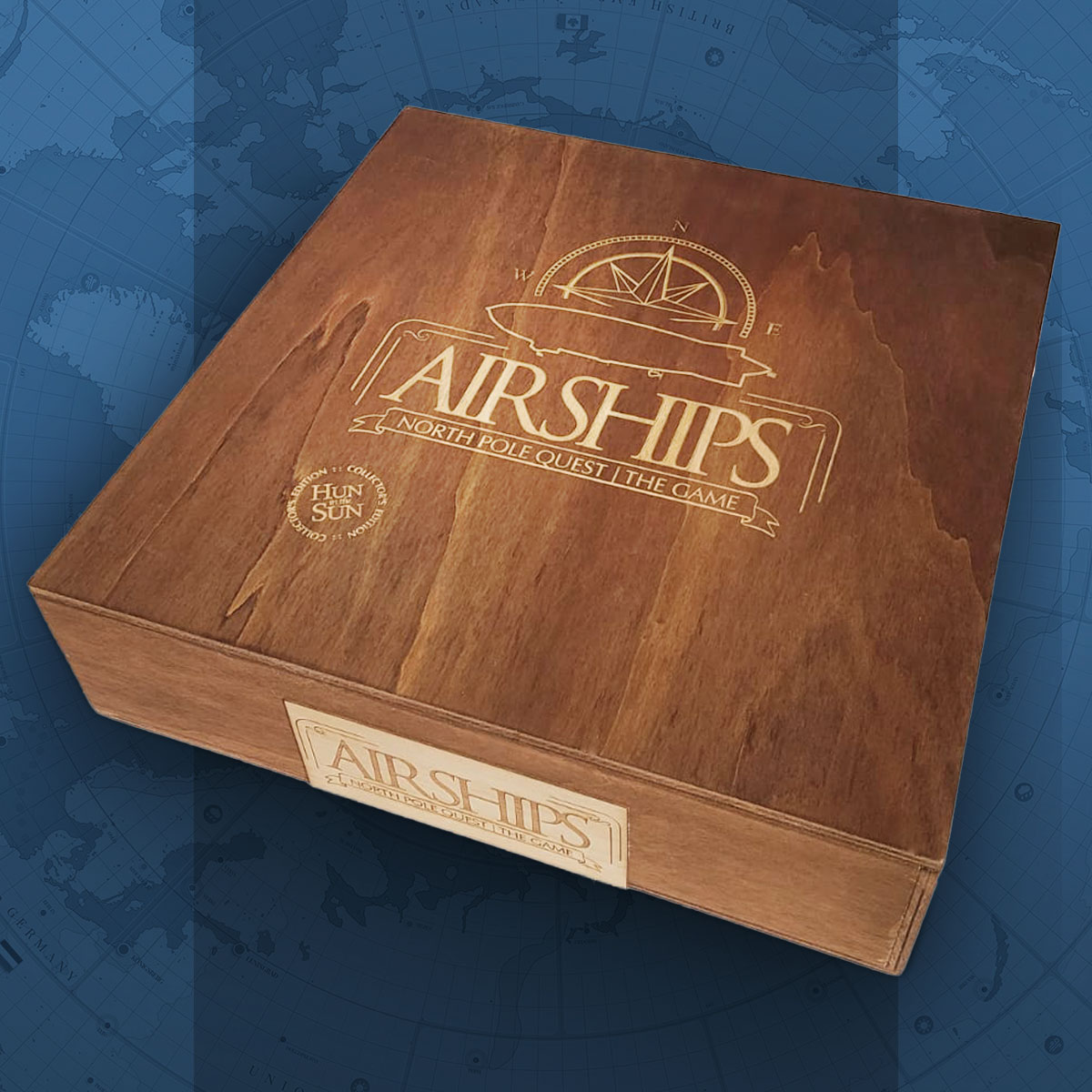airships: north pole quest | The Game
Airships Game | Special Core E
210,00 € Original price was: 210,00 €.190,00 €Current price is: 190,00 €.
The majestic beauty of airships, epic missions to unexplored lands, facing adverse weather conditions with early technologies.
A true and forgotten story, exploring the earth from the sky, a unique moment in the human history.
introduction
An Epic race
towards the Pole
We will bring you back to 1924, in the golden years of airships, when nations started aiming for the Arctic, the last inviolate frontier, and for its symbol: the North Pole.
We want you to relive the same thrills and challenges, assuming the role of a brave commander responsible for the life of his crew. You must balance the sometimes-competing priorities of political pressures, scientific ambition, and immense expenses, all while dealing with issues that are, literally, “life and death.”
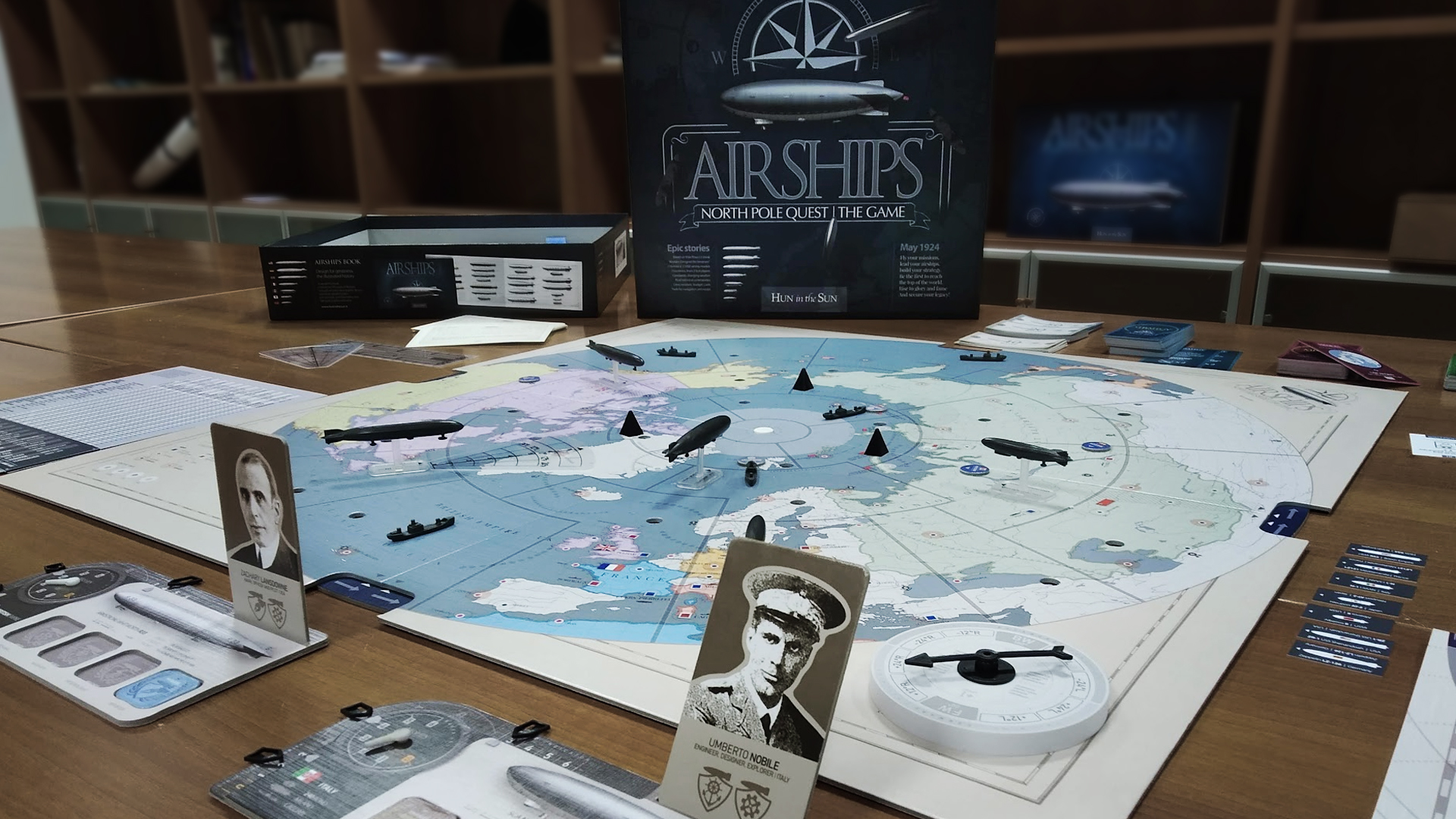
The team

Massimiliano “Max” Pinucci
Designer, teacher and pilot
Designer and teacher, Max Pinucci loves everything that tells the horizons: travel, cartography, geography, history, always an enthusiast of the history of flight and exploration.
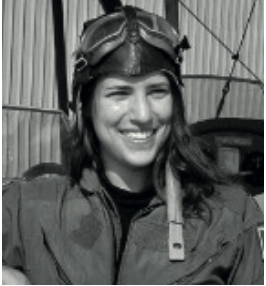
Elena Degl’
Innocenti
Art direction, video and animations

Marco Ferracci
Game production, 3D modelling and art

Manuela Coticone
Project management and game developmen

Lorenzo Ninci
Game design and rules development
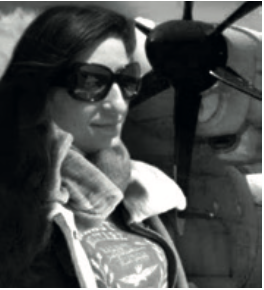
Valentina Pala
Graphic design and layout
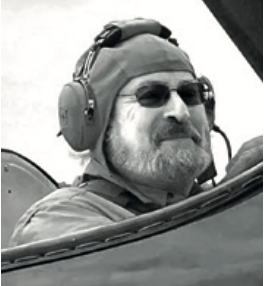
Kevin Duke
Rules editing, advice and marketing (US)

Nicola Aggogeri
Advice and marketing (ITA)

Nello Fontani
3D animations and ar
THE EXTENDED
TEAM
Stephen Clark Briggs
Augusto Chiarle
Patrick Dauscher
Carl-Oscar Lawaczeck
Silvio “Pan” Lucchesi
Elisabetta Pinucci
Thibault Proux
Olga Venetska
OUR TEAM OF EXPERTS
Gregory Alegi
Sergei Bendin
Andrew Brown
Bruce Dickinson
Roberto di Meglio
Kirk Mc Ginnis
Knut Petter Johannesen
Carl-Oscar Lawaczeck
Mikhail Panchenko
Alastair Reid
Francisco A. Gonzalez Redondo François-Gilles Ricard
Adelio Roviti
John Stephenson
Antonio Ventre
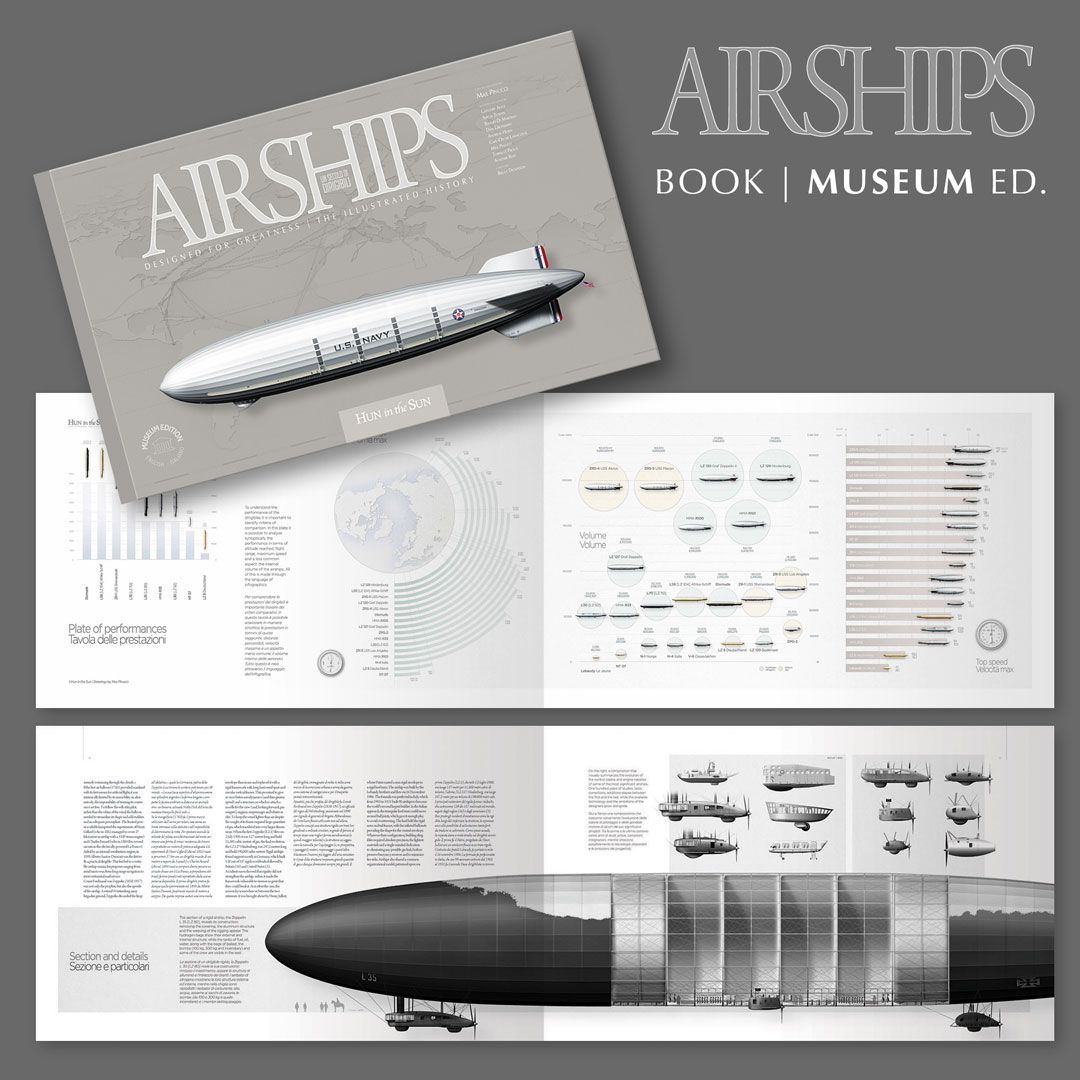
Airships Book
Based on “Airships | Designed for greatness, the illustrated history”, created by an international team and regarded to be the most beautiful book on the subject in the aeronautic literature.

Petter
Johannesen
Grandnephew of Roald Amundsen
“I love history told through a game. I love “Airships, North Pole Quest”. The North Pole, airships, exploration, challenge and triumph are fantastic ingredients to enjoy some competition with your family and friends”.

Antonio
Ventre
Umberto Nobile Museum,
director
“Amazing! A beautiful work, a great way to pay tribute to these forgotten heroes of the past, to which we owe so much”

Carl-Oscar Lawaczeck
CEO Oceansky, Airships operator and pilot
“Mankind has always explored and pushed the boundaries. It’s part of who we are. The “Airships North Pole Quest” board game tickles this deep instinct, unleash your passion: the race is on”.

John
Stevenson
Film director
and animator
“If you think that Airships are the most romantic and exotic of all the symbols of humanity’s dream of flight, then this beautiful game will make your heart soar”.

Thibault
Proux
Airships
Engineer
“Full of realism and History, complete and with a pure refined design “Airships, North Pole Quest”is the perfect game that will satisfy equally the most airship enthusiast as well as the youngest polar explorer”.

01. Scoreboard
02. Weather Disc
03. Game Plan
04. Commanders
05. Specialist Token
06. Airships
07. Ships
08. Navigating Tool
09. Range Calculator
10. Wind Indicator
11. Venture Cards
12. Strategy Cards
13. Mission Cards
14. Solo Mode Cards
15. Telegrams
16. Mission Calculator
17. Bonds
18. Target Token
19. Mooring mast
20. Clips
21. Place Holder Card
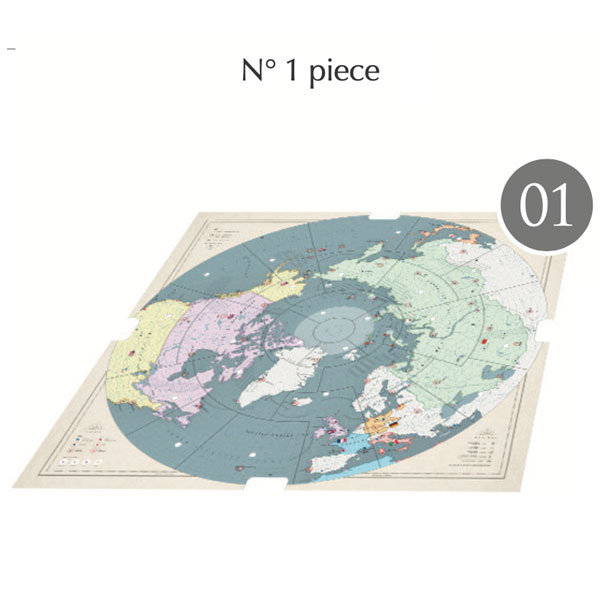
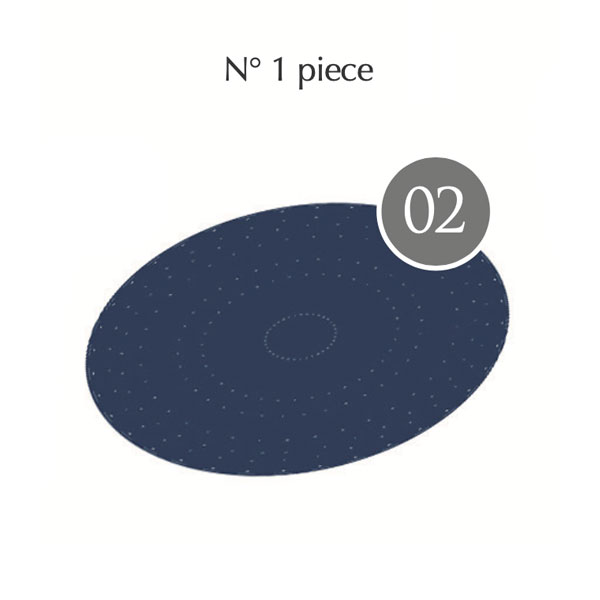
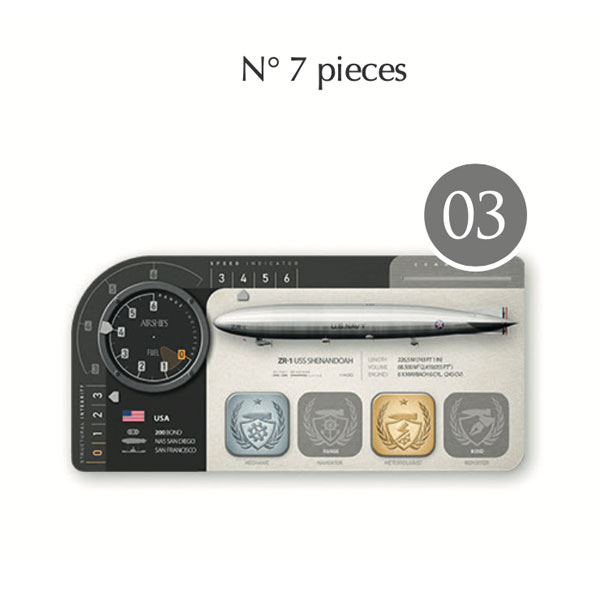
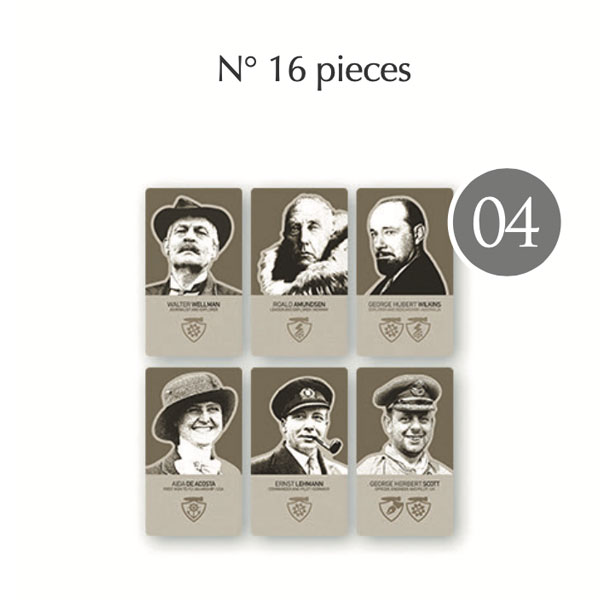

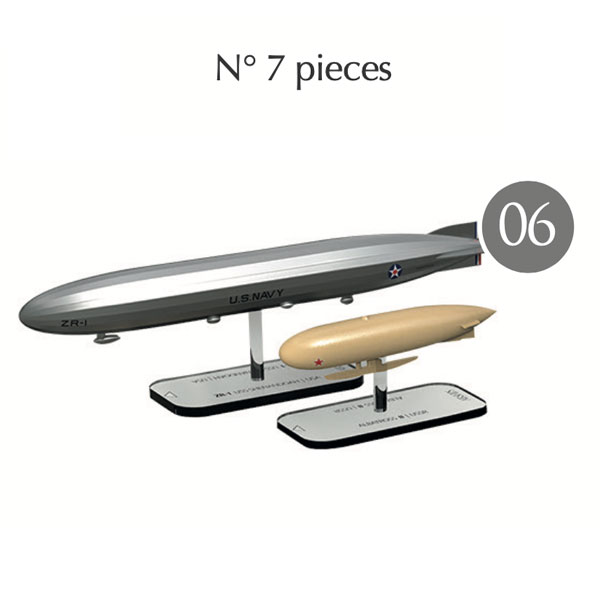

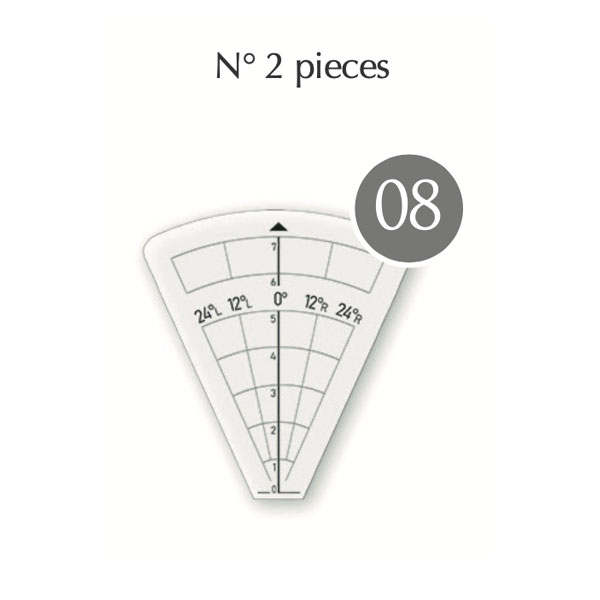

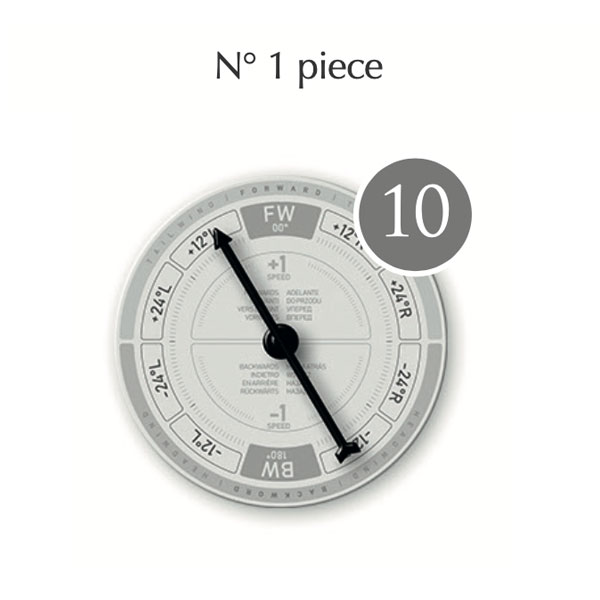

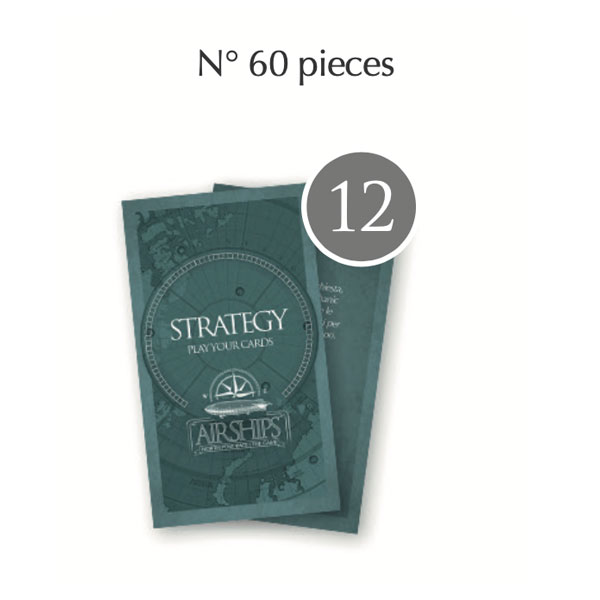
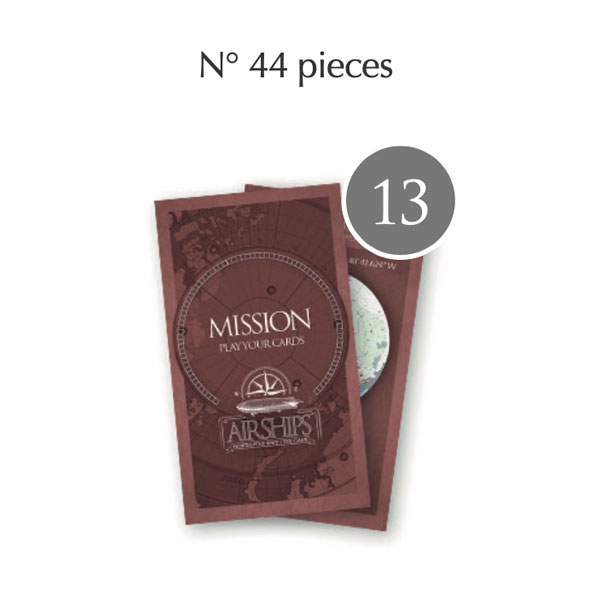


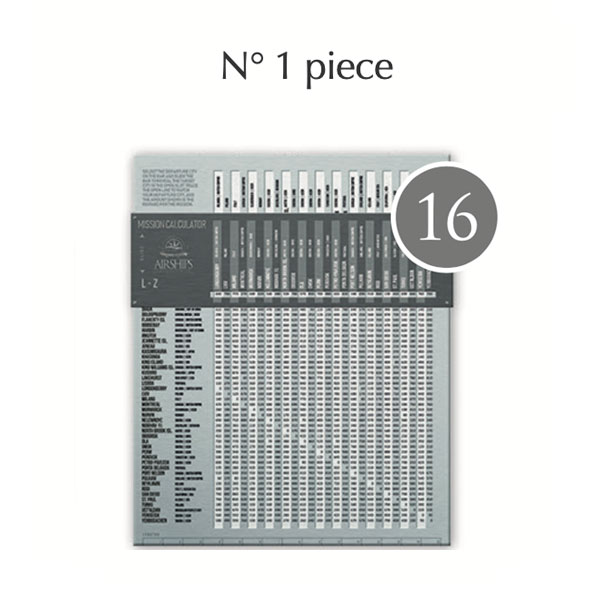

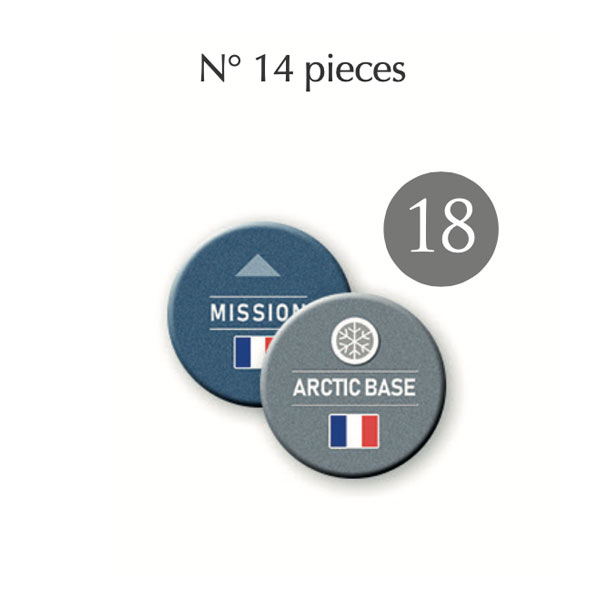


Number of players
2 to 6 (7 Airship models)
Playing time
50 to 200 minutes (depending on the number of players and the level of the rules)
Languages
English, Italian, French, German
Thanks to the accurate and planned historical and iconographic research, based on hundreds of pictures and drawings, in collaboration with an international team of authors and experts, all the components of the game have been designed in extreme detail. Years of work have been devoted to the realization of this board game, dedicated to the most amazing flying machines from the early days of aviation. You will get to play with real Airships models in scale, using authentic cartographytools diving deep into a unique atmosphere.

Airships of the game
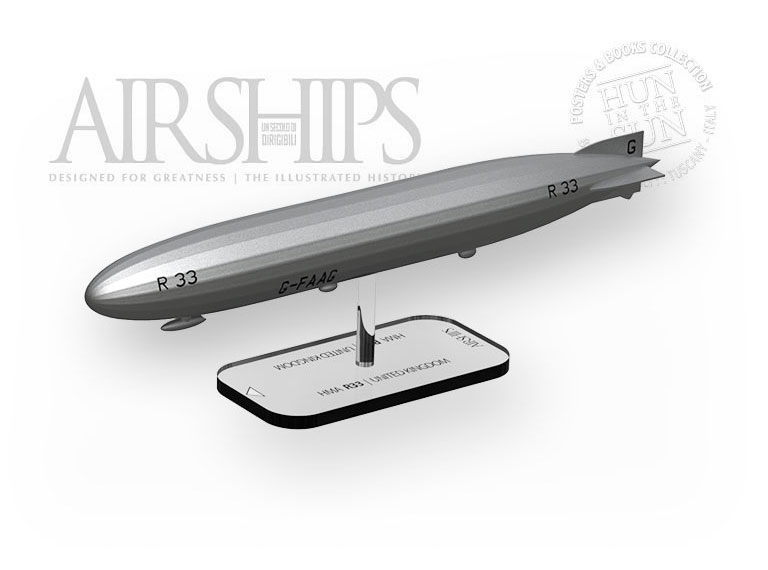
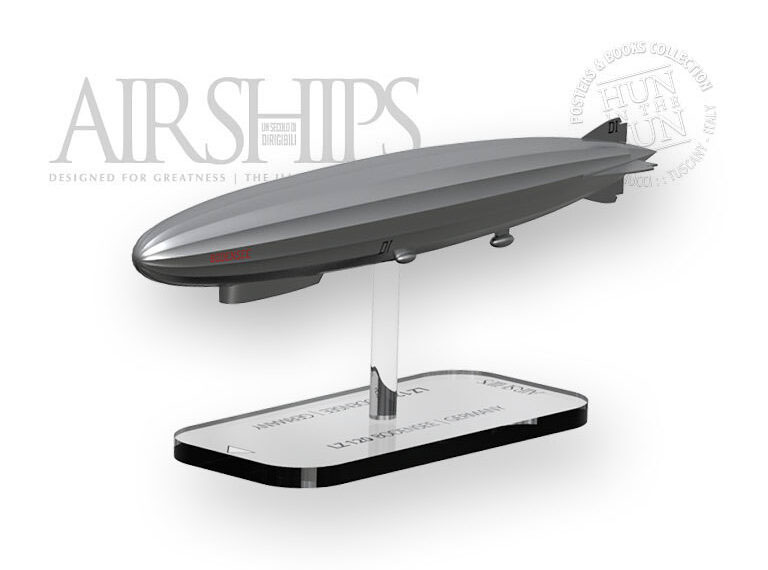
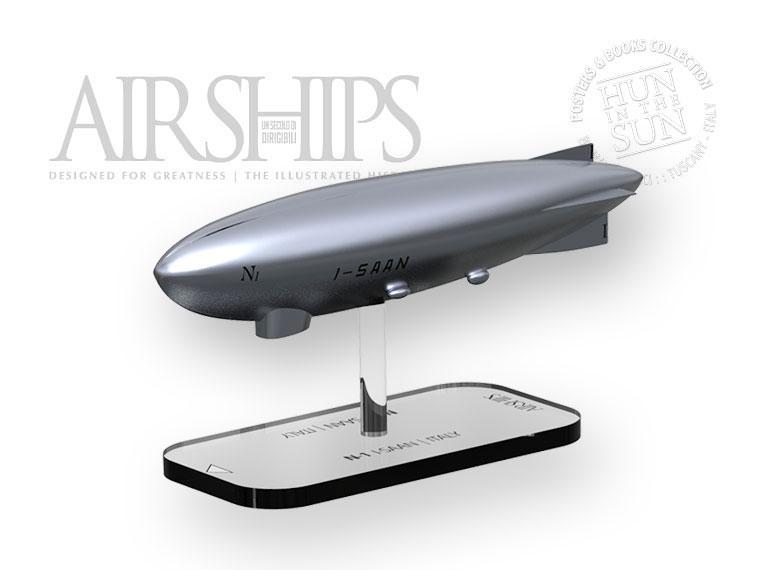
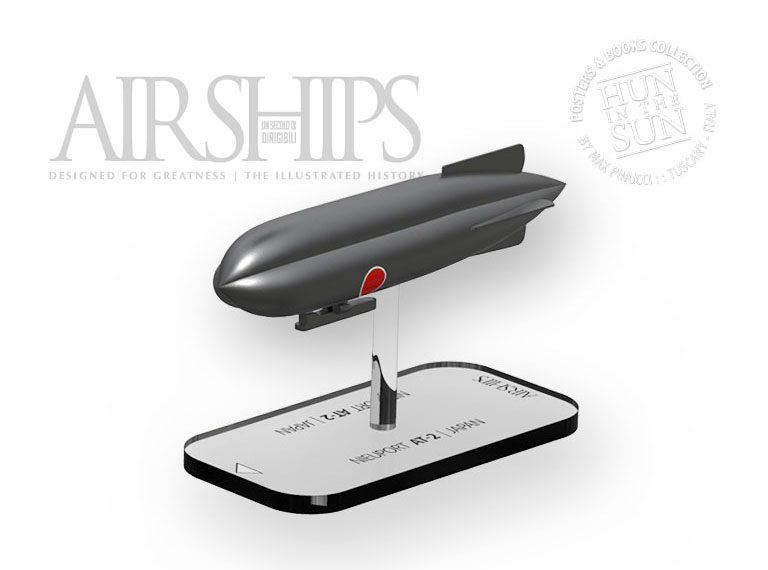
HMA R33 :: British Empire
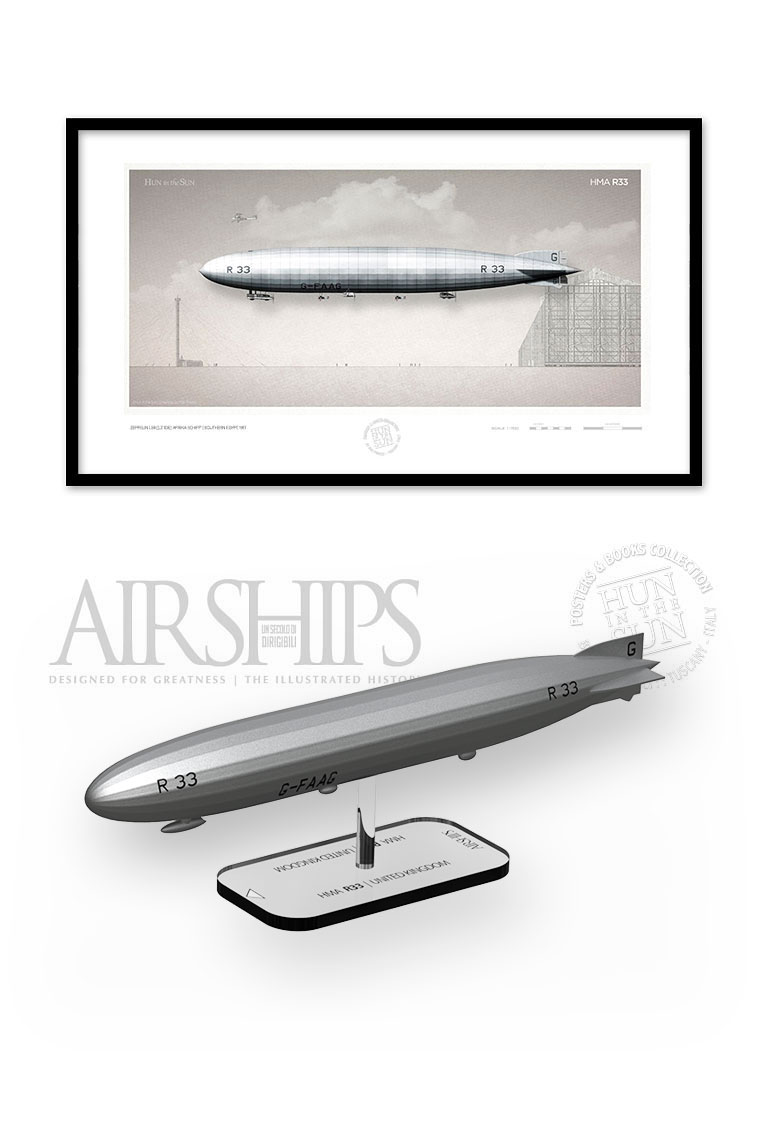 The first British airship flew in 1902. Since then, a series of projects followed one another that led the British Empire to develop an important fleet of non-rigid and semi-rigid dirigibles that were intensively used during the Great War. But England was also the first country to suffer from German Zeppelin air attacks. From the downed wreck of one of them, the L33, the R33 project came to life in 1916, destined to become one of the most successful rigid airships in the world. In service from 1919 to 1928, it stood out for its reliability and performance. The ‘sister’ R34 made a sensational crossing (in both directions) of the Atlantic Ocean in 1919, flying from the United Kingdom to the United States and back. The “Rs” had a length of 643 ft. (196 m), a diameter of 79ft (24m), a volume of 1,950,000 ft3 (55,500 m3). Their five 275 hp Sunbeam Maori engines gave them a speed of 62 mph (99 km / h) and a maximum range of 4,815 miles (7,750 km). The crew was 23.
The first British airship flew in 1902. Since then, a series of projects followed one another that led the British Empire to develop an important fleet of non-rigid and semi-rigid dirigibles that were intensively used during the Great War. But England was also the first country to suffer from German Zeppelin air attacks. From the downed wreck of one of them, the L33, the R33 project came to life in 1916, destined to become one of the most successful rigid airships in the world. In service from 1919 to 1928, it stood out for its reliability and performance. The ‘sister’ R34 made a sensational crossing (in both directions) of the Atlantic Ocean in 1919, flying from the United Kingdom to the United States and back. The “Rs” had a length of 643 ft. (196 m), a diameter of 79ft (24m), a volume of 1,950,000 ft3 (55,500 m3). Their five 275 hp Sunbeam Maori engines gave them a speed of 62 mph (99 km / h) and a maximum range of 4,815 miles (7,750 km). The crew was 23.
The R33 was not designed for polar flights, but was derived from one of the most successful Zeppelin models: the R-class. This robust, reliable, powerful machine was potentially an exploration airship, as demonstrated by its Atlantic record. In the game, it can take off from its historical base, Pulham, or from Montreal: bases that really existed. The Imperial Airship Scheme was an ambitious project to connect through airships what was, in 1924, the largest empire in history.
N-1 I-SAAN :: Italy
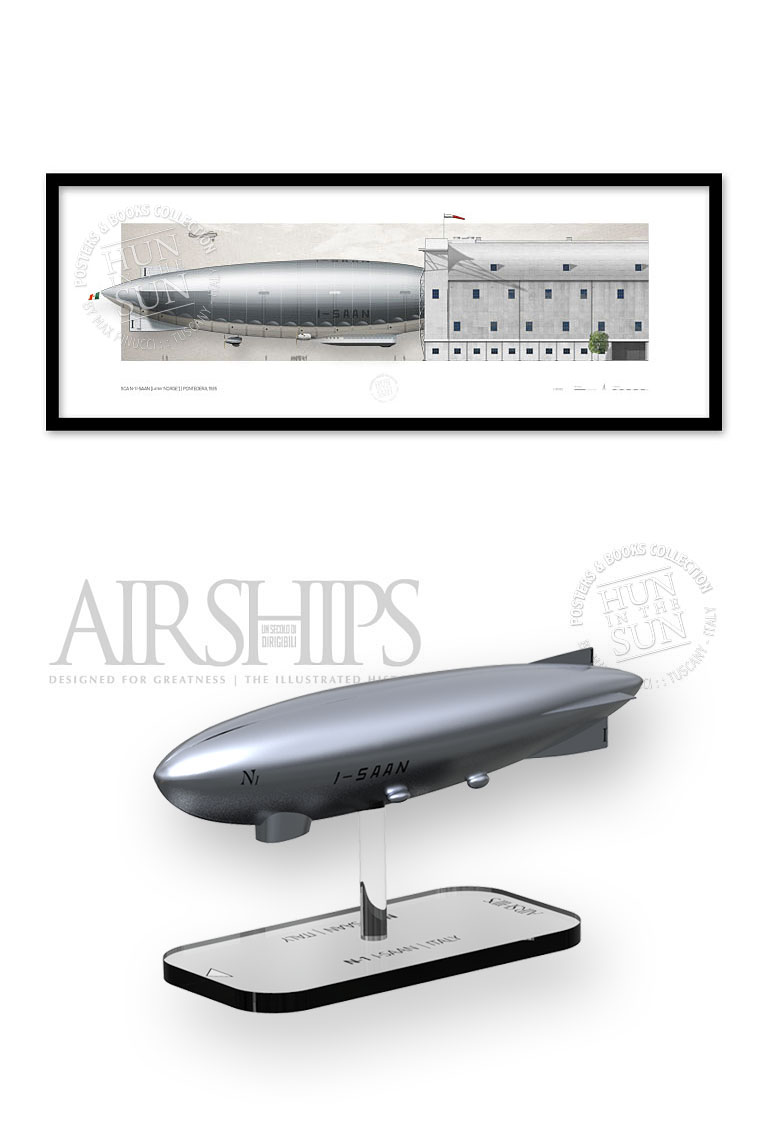
Umberto Nobile, designer and engineer, was the director of the military aeronautical construction plant in Rome when, in 1923, the design of a new semi-rigid airship reached the drawing boards. Based on the experiences gained in the Great War, the airship proved to be sturdy, compact, and offered good performance. The N-1 had a volume of 635,664 ft3 (18,000 m3), a length of 348 ft (106 m) and a diameter of 61 ft (18.6 m). Its performance, a speed of 70.2 mph (113 km/h) and a range of 3,100 miles (5,000 km) made it attractive not only for the primary passenger transport role but also for long-distance flights and exploration. The Norwegian explorer Roald Amundsen chose it in 1926 to attempt to fly over the North Pole. Strengthened and improved to adapt to its new role, the renamed “Norge” (Norway) was financed by the Norwegian Aero Club, the American magnate Lincoln Ellsworth, and the Italian government. The Norge crossed Europe in stages, reaching Ny-Ålesund (Svalbard) and from there the North Pole on May 12, 1926 to land safely in Teller, Alaska, USA, making the first proven over flight of the rooftop of the world, with a total flight of 8,100 miles (13,000 km).
Of course, we had to include the N-1. It was, in 1926, the winner! It crossed mountains, seas, and eternal ice, challenging the elements and dealing with the difficulties of both logistics and expenses, but managed to drop the flags of Norway, the United States, and Italy on the North Pole. Compact, light, easy to handle, it proved, in the hands of three great explorers, to be suitable for the extreme task. Its twin, the N-4 Italia, repeated the achievement in 1928. But bad weather and head winds caused its loss, after contact with the ground which left part of the airship and crew on the ice while the remainder floated away and were never found.
LZ120 Bodensee :: Germany
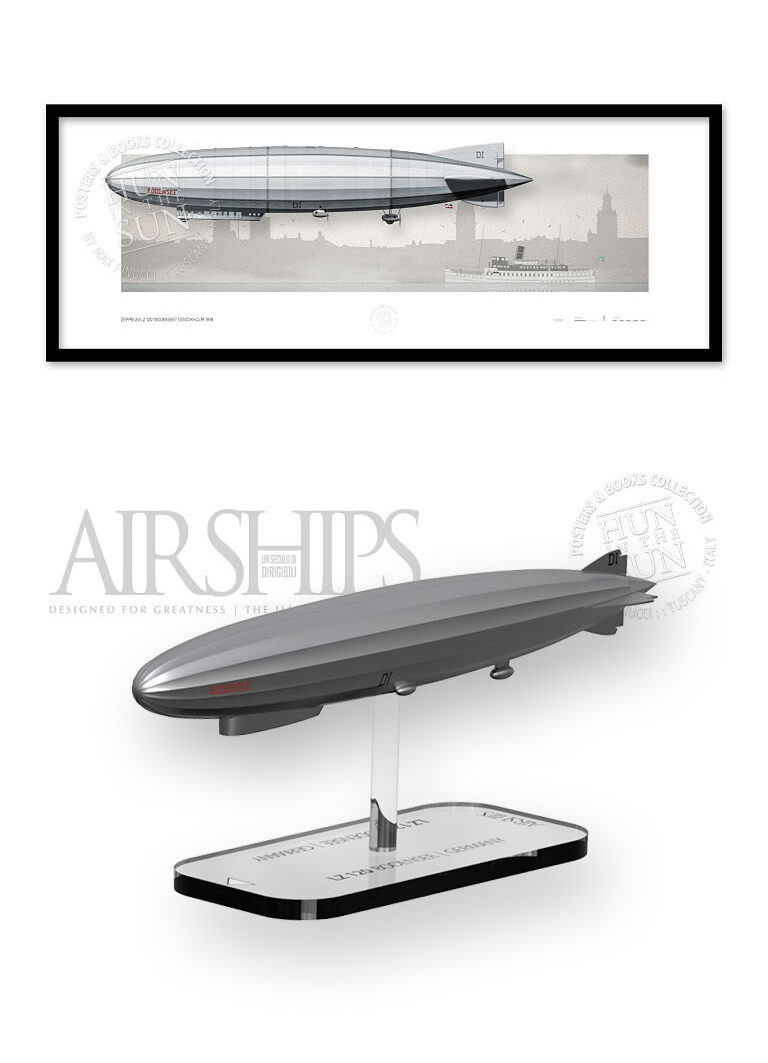
Germany can rightfully be called the birthplace of airships. From the 1895 patent of Count Ferdinand von Zeppelin derived the largest, most famous, and best performing dirigibles, a story that still continues today, after more than a century. World War I brought Zeppelins sad fame–they really were not good “war machines”– but a huge boost in performance and technology. After the war, Zeppelin and its airline, DELAG (managed by Hugo Eckener), returned to the design of airships for passenger use. The LZ120 Bodensee made its first flight on August 20, 1919. It was small but very modern and innovative. It was initially 396.3 ft (120.8 m) long, with a diameter of 61.4 ft (18.7 m) and a volume of 706,290 ft3 (20,000 m3). It had 12 crew members and could carry 27 passengers. It was powered by 4 Maybach Mb IVa engines (245 hp) with a speed of 82.3 mph (135 km/h). Robust, fast, reliable, it began its flights the same year and was lengthened by 32.8 ft (10 m). But in 1921 it was sold to Italy as compensation for war damage and, renamed Esperia, it was flown until 1928.
Adding this is another historical stretch of the game. But, at the beginning of 1924, the LZ120 was certainly the most modern airship in service in the world, even though it no longer belonged to Germany. We know that history is not made with “ifs” and “buts,” but if anyone could have challenged the N-1 in the polar race, that would have been the fast, reliable LZ120. Including it makes for a better game!
N-1 I-SAAN :: Italy

Umberto Nobile, designer and engineer, was the director of the military aeronautical construction plant in Rome when, in 1923, the design of a new semi-rigid airship reached the drawing boards. Based on the experiences gained in the Great War, the airship proved to be sturdy, compact, and offered good performance. The N-1 had a volume of 635,664 ft3 (18,000 m3), a length of 348 ft (106 m) and a diameter of 61 ft (18.6 m). Its performance, a speed of 70.2 mph (113 km/h) and a range of 3,100 miles (5,000 km) made it attractive not only for the primary passenger transport role but also for long-distance flights and exploration. The Norwegian explorer Roald Amundsen chose it in 1926 to attempt to fly over the North Pole. Strengthened and improved to adapt to its new role, the renamed “Norge” (Norway) was financed by the Norwegian Aero Club, the American magnate Lincoln Ellsworth, and the Italian government. The Norge crossed Europe in stages, reaching Ny-Ålesund (Svalbard) and from there the North Pole on May 12, 1926 to land safely in Teller, Alaska, USA, making the first proven over flight of the rooftop of the world, with a total flight of 8,100 miles (13,000 km).
Of course, we had to include the N-1. It was, in 1926, the winner! It crossed mountains, seas, and eternal ice, challenging the elements and dealing with the difficulties of both logistics and expenses, but managed to drop the flags of Norway, the United States, and Italy on the North Pole. Compact, light, easy to handle, it proved, in the hands of three great explorers, to be suitable for the extreme task. Its twin, the N-4 Italia, repeated the achievement in 1928. But bad weather and head winds caused its loss, after contact with the ground which left part of the airship and crew on the ice while the remainder floated away and were never found.
NIEUPORT AT-2 :: Japan

apan began to be interested in airships at the end of the 19th Century, gaining its first–the Yamada-shiki for the Imperial Army in 1910. The Nieuport AT-2 (sometimes referred to as the Astra Torres AT-2 or AT-24) was purchased in France by the Imperial Navy and, after being transported to Japan, flew on July 10 of the same year. The Astra-Torres airships have a distinct trefoil section. Large numbers were used in the First World War as anti-submarine patrol craft. The AT-2 was housed in the Kasumigaura hangar, received from Germany for war reparations. Powered by two Sunbeam 300hp 12 cylinder V engines, it was, frankly, slow, with a cruising speed of about 29 mph, (47 km/h) and a top speed of 48 mph, (77 km/h). But it did have a range of 48 hours (970 miles, 1560 km) and good resilience. It was 263 ft (80 m) long with a diameter of 54 ft (16.5 m) and a volume of 363,950 ft3 (10,300 m3). The crew was 7-12 people.
Adding Japan to the game was a deliberate stretch. The Empire, at the end of the Great War, was pursuing a modernization that led it to become a new world power. The Nieuport AT-2 was not fully suitable for a polar flight, but we included it as a symbol of that series of airships that Japan would develop (especially with the help of Italy). Japan’s desire for world recognition makes it a natural competitor for the “race” to the North Pole.
ZR-1 USS SHENANDOAH :: USA

Like the British R33 and R34, the USS Shenandoah was also designed after the examination of the wreck of the Zeppelin L49 of the German Imperial Navy, shot down in France in 1917. The ZR-1 was however adapted (and blessed!) to use helium gas instead of the explosive hydrogen. (This gas was rare at the time, and inflating Shenandoah used most of the then-existing supply in the world!) It was 743 ft (226.5 m) long with a diameter of 78 ft 10 ”(23.9 m) and a volume of 2,419,055 ft3 (68,500 m3). It had 40 crewmembers, was powered by 6 Maybach engines (245 hp) which gave it a top speed of 77 mph (124 km / h) and a range of 7,456 miles (12,000 km). The ZR-1 flew in 1923 under the insignia of the US Navy, and was immediately involved in a dense program of experiments (including the possibility of docking with a special naval unit, the USS Patoka). At the end of 1923, the Shenandoah was chosen to fly to the North Pole. Unfortunately, in January 1924, an accident damaged it, requiring four months of repair work and put the polar flight project aside. In September 1925, the Shenandoah was caught in a storm over Ohio, and broke up due to strong winds. Fourteen crewmembers, including Commander Zachary Landsdowne, perished in the disaster, but 29 survived.
When in 1924 the N-1, not yet named Norge, still did not know of the world fame that awaited it, the ZR-1 inspired unlimited confidence to push US President Calvin Coolidge to approve a plan for a flight to the North Pole. This immense airship turned out to be unexpectedly fragile, and shocked America with its sudden tragic end. However, on the game board, the miniature of the Shenandoah, the “Daughter of the Stars”, stands out unmistakably.
ALBATROSS-II :: USSR
Imperial Russia had closely followed the evolution of aeronautical technology, and actually commissioned an airship to fight back against Napoleon in 1812. (It did not work.) By 1869, Russia had a successful airship flight. This was followed by the purchase of dirigibles (in France, England and Germany) and the development of their own original designs. One of them was the Albatross, a semi-rigid airship made by Izhorsky in 1912. It had a volume of 339,000 ft3 (9,600 m3), a length of 253 ft (77 m), a diameter of 49 ft (15 m) and a speed of 68 km / h. The Albatross was rebuilt after an accident and renamed Albatross-II. With the October Revolution, the newborn Soviet air force, Voenno-ozdušnye Sily, took charge of the airships that survived the Great War, and new projects were added, such as the Red Star and the VI October. The dream of a fleet of dirigibles already existed, but to see good performance airships built, the USSR had to wait until the 1930s (and the help of the Italian designer Umberto Nobile).
As for Japan, the USSR had great plans for developing a fleet of airships, but in 1924 it was still relying on surviving machines from the Great War. The Albatross-II included in the game, like the Japanese AT-2, was unsuitable for long duration flights. It was slow, small, and underpowered. Post Revolutionary Russia, however, has several advantages. It has a huge territory, with many bases in the Arctic, plus a host of scientists and explorers who will allow it to be a very capable opponent.
MEDITERRANÉE:: France
While many people remember that the world’s first hot air balloon rose from the ground in France, (Montgolfier brothers, 1783), far fewer are aware that the first powered and controlled airships also happened in France (the word “dirigible” itself comes from the French word diriger, meaning to “direct or steer). Jules Henri Giffard took advantage of earlier designs and built a small steam engine to provide power. His flight, in September of 1852, was 51 years before the Wright Brothers, but the airship was very slow and unable to travel against any significant wind. Still, it was the first!
After the Great War, while most of French airship effort was on non-rigid (dirigible) or semi-rigid airships, such as the Astra Torres and the Zodiacs, but everyone involved realized the difficulties of polar exploration strongly suggested a rigid airship– like a Zeppelin– would be safer and more successful. The best choice for that was a German machine, received in 1922 to compensate for war damage. The LZ121 Nordstern was a compact, robust, modern rigid Zeppelin airship. Renamed as Mediterranée, it will be a strong competitor in the North Pole Quest.
